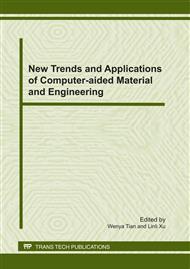[1]
Haase W , Maurer A. Latest Developments on Industrial Ultrasonic Testing of Aircraft Components[C] Proceedings of the World Conference on Non-Destructive Testing. Montreal , Canada , 2004 : 225-236.
Google Scholar
[2]
Carbon-fibre reinforced plastics.Non-destructive testing,1975,33(3):137-145.
Google Scholar
[3]
Li Zhijun. Non-Destructive Testing of Advanced Composites. Astronautical Material Process, 2000, 5: 28~31.
Google Scholar
[4]
B. C. Hoskin,A. A. Baker.Composite Materials for Aircraft Structures American Institute of Aeronautics and Astronautics,Inc. ,(1986).
Google Scholar
[5]
Michael MacRae.Details without damage: NDT methods"find fault" with composite materials.Advanced Composites,1993,July/August:28~34.
Google Scholar
[6]
Robert E,Green J R. Nondestructive characterization of material properties[J]. Mechanical Engineering,1987,109(2):268.
Google Scholar
[7]
D.E.W. Stone,B. Clarke. Ultrasonic attenuation as a measure of void content in carbon-fibre reinforced plastics. Non-destructive testing,1975,June:137-145.
DOI: 10.1016/0029-1021(75)90023-7
Google Scholar
[8]
Birt E A,Smith R A. A review of NDE methods for porosity measurement in fibre-reinforced polymer composites. Non-Destructive Testing and Condition Monitoring, 2004,46(11):681~686.
DOI: 10.1784/insi.46.11.681.52280
Google Scholar
[9]
EARL J. Kohn,G. Sand,C. Clark.Glass-Filament-Wound composites and correlation of interlaminar shear strength with void content.I&EC Product research and development,1968,7(3):179-183.
DOI: 10.1021/i360027a004
Google Scholar
[10]
Zhou Xiaojun, You Hongwu, Cheng Yaodong. Ultrasonic Attenuation Model of Void Contained Carbon-fiber Reinforced Plastics. ACTA Material Composite Sinica, 1997, 14(3): 99~106.
Google Scholar


